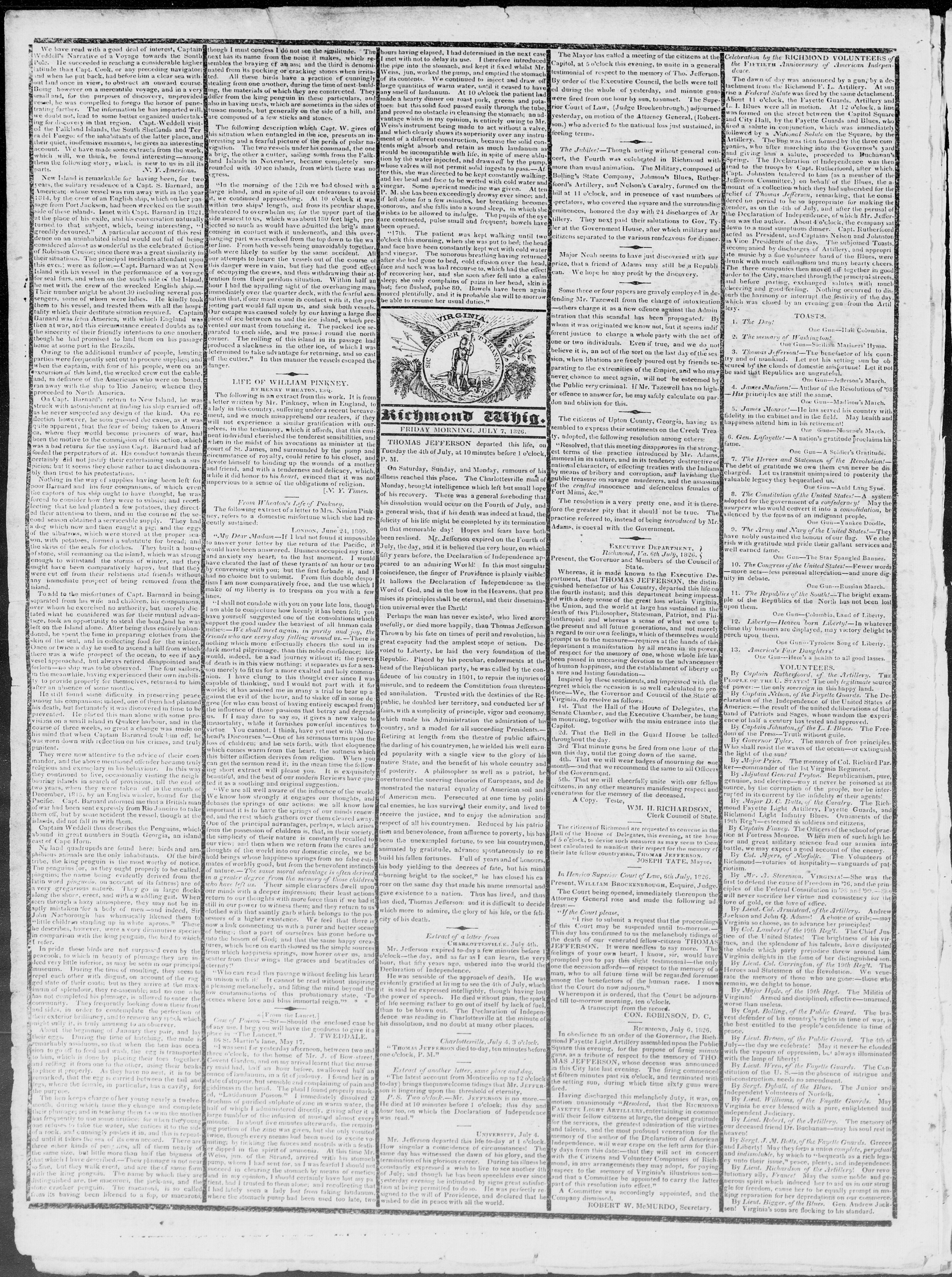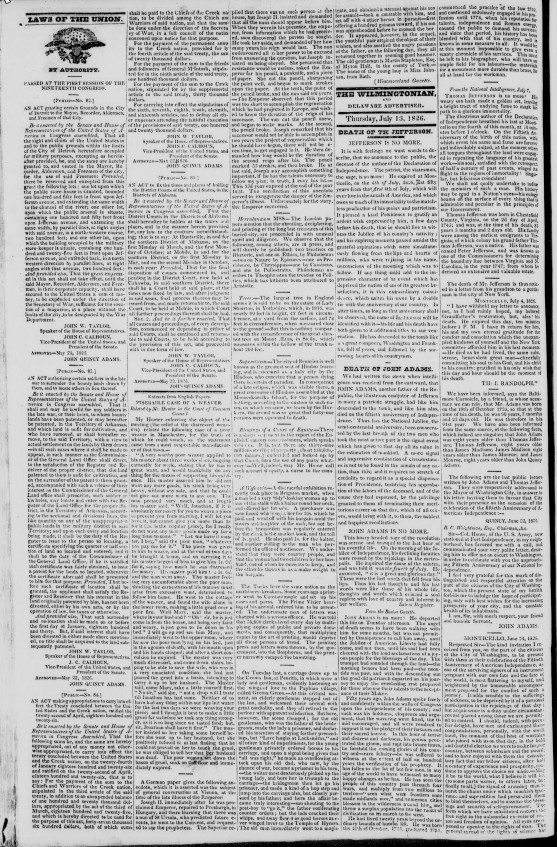The 4th of July, 1826, marked the 50th anniversary of the Declaration of Independence, a day of national celebration known as the Jubilee. However, this jubilant day took an unexpected turn into a moment of profound national mourning as it became the day two of America’s most revered Founding Fathers, Thomas Jefferson and John Adams, passed away. The eerie timing of their deaths, occurring on the very anniversary of the nation they helped create, resonated deeply with the American public, amplified by the poignant last words attributed to John Adams: “Jefferson still lives.”
News of their deaths spread slowly in the 19th century, yet the impact was immediate and immense. Jefferson, the principal author of the Declaration of Independence and the third U.S. President, died in Monticello, Virginia, in the early afternoon at the age of 83. Several hours later, in Quincy, Massachusetts, John Adams, the second U.S. President, breathed his last at the age of 90. Despite their close friendship during the revolution and early republic, Adams and Jefferson had endured a period of political estrangement following the contentious election of 1800. Adams, a Federalist, and Jefferson, a Democratic-Republican, represented diverging political ideologies. However, in 1812, Adams initiated a renewed correspondence with Jefferson, a heartwarming reconciliation that lasted until their final days. Their exchanged letters, the last from Jefferson on March 23 and from Adams on April 17, 1826, stand as testaments to their enduring bond.
 Sepia scan of the front page of a newspaper with visible text: COLUMBIAN CENTINEL.
Sepia scan of the front page of a newspaper with visible text: COLUMBIAN CENTINEL.
Historical newspaper front page announcing John Adams’s death, showcasing traditional mourning bars.
The news of John Adams’s passing first reached Boston. The Columbian Centinel, a Boston newspaper with Federalist leanings from the era Adams championed, conveyed the somber news in its July 8, 1826, edition. Reflecting the deep sense of loss, the newspaper employed mourning bars – heavy black lines framing the text – a tradition dating back to the 17th century, used to signal the death of an important figure. Amidst this visual expression of national grief, reports of John Adams’s last words began to circulate. Newspaper accounts from the time, including those later referenced in publications like the Evening Star (Washington, D.C.) in 1899, reported that John Adams’s final utterance was, “Jefferson still lives.” These powerful last words, expressing concern for his long-time friend and fellow patriot, even in his final moments, became instantly iconic, encapsulating the spirit of unity and camaraderie between the founders.
However, unbeknownst to John Adams, Thomas Jefferson had preceded him in death by several hours. News of Jefferson’s death soon followed, reaching Boston and the rest of the nation, compounding the sorrow. The subsequent issue of the Columbian Sentinel captured the doubled sense of loss with the headline, “Another GREAT MAN is No More! and our columns again are shrowed in respectful mourning.”
 Black and white image of a newspaper page with dark lines on either side of five columns.
Black and white image of a newspaper page with dark lines on either side of five columns.
Front page of the Constitutional Whig newspaper, displaying mourning borders for Thomas Jefferson’s death.
The Constitutional Whig of Richmond, Virginia, Jefferson’s home state, announced his death in its July 7, 1826, publication, similarly draped in mourning. As news continued to disseminate, newspapers like The Wilmingtonian, and Delaware Advertiser reported on both deaths in their July 13, 1826, editions, further emphasizing the extraordinary and mournful coincidence.
 Black and white image of a newspaper page.
Black and white image of a newspaper page.
The Wilmingtonian newspaper cover announcing the simultaneous deaths of Jefferson and Adams.
The passing of John Adams and Thomas Jefferson on the Jubilee sparked widespread eulogies and commemorations across the young nation. Daniel Webster, a prominent statesman, delivered a powerful eulogy that resonated with the public sentiment that this was more than mere coincidence, hinting at a divine orchestration. Adding another layer to these remarkable events, exactly five years later, on July 4, 1831, James Monroe, the fifth U.S. President, also died on Independence Day, further solidifying the mystique surrounding this date in American presidential history.
John Adams’s last words, “Jefferson still lives,” even though factually incorrect at the moment he spoke them, became a powerful symbol. They represent the deep connection between these two founding fathers and their shared commitment to the ideals of the American Revolution. These words, intertwined with the uncanny timing of their deaths, cemented their legacy in the American memory, forever linking July 4th not only with independence but also with the intertwined destinies of these pivotal figures in American history.
Discover more:
*The Chronicling America historic newspapers online collection is a product of the National Digital Newspaper Program and jointly sponsored by the Library and the National Endowment for the Humanities.
Follow Chronicling America on Twitter @ChronAmLOC.
Click here to subscribe to Headlines & Heroes–it’s free!


